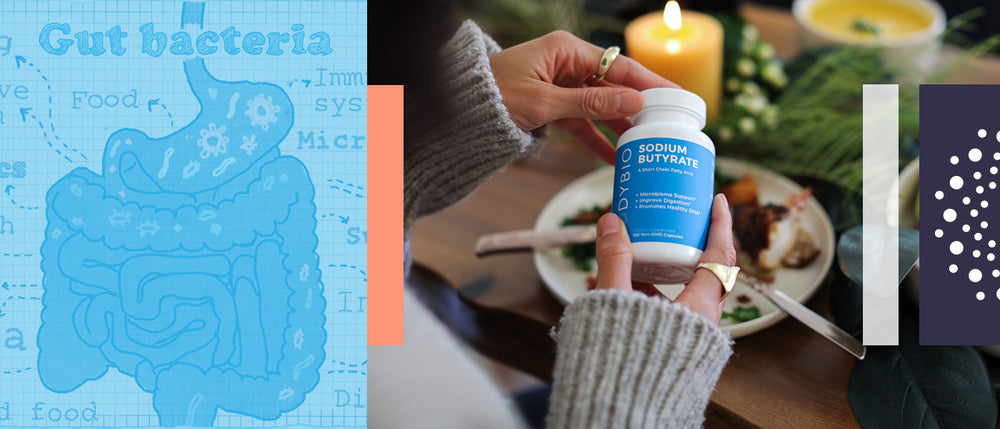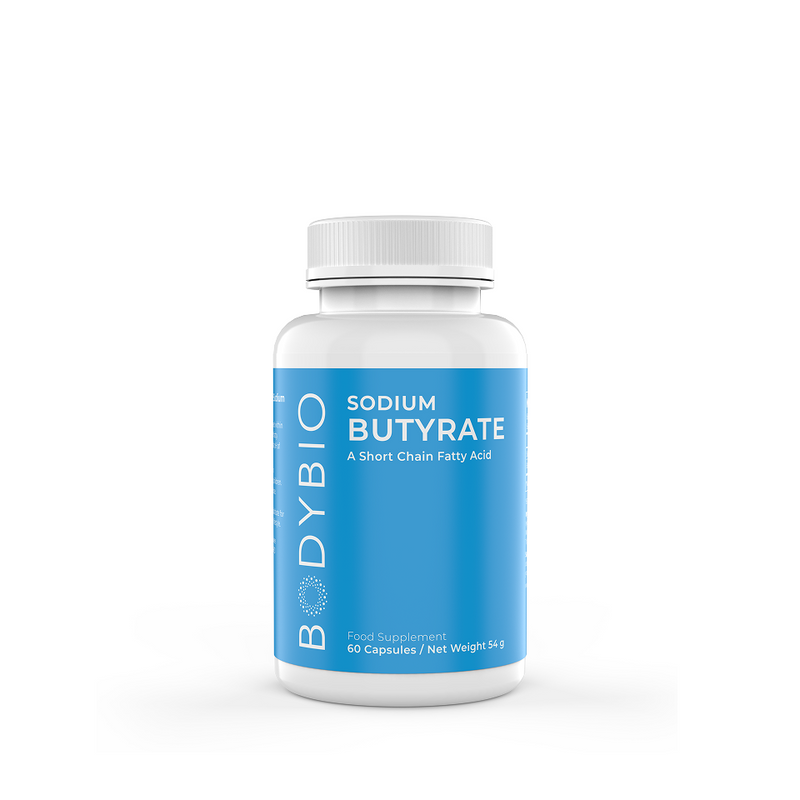Why Is Fiber Important and How To Eat More High-Fiber Foods
You probably know that you need a balance of protein, healthy fat, and carbohydrates with each meal – these are your macronutrients. But what about fiber? We don’t classify fiber as a macronutrient because we don’t actually absorb it into the body. In fact, we can’t even really digest fiber on our own. But our microbiome can. And that’s where some of the best benefits of fiber come in.
In this article, we’ll break down (pun intended) fiber and how it benefits our gut health (and heart/metabolic health too!). We’ll cover the different types of fiber, soluble vs. insoluble fiber, how much fiber you actually need, and some high-fiber foods you can prioritize in your diet.
Table of Contents:
- What is Dietary Fiber?
- Soluble vs. Insoluble Fiber
- Fiber for Gut Health
- Benefits of a High-Fiber Diet
- How Much Fiber Do You Need?
- Foods High in Fiber
- How to Eat More Fiber Every Day
- The Bottom Line on Fiber
What Is Dietary Fiber?
Dietary fiber comes in many different types, but all fibers are plant-based carbohydrates that encourage healthy bowel movements by bulking up stool. Many kinds of fiber also absorb toxins and byproducts of digestion and provide fuel for our gut bacteria [1].
Unlike protein and fat, dietary fiber can not be broken down by our digestive enzymes and goes completely unabsorbed in its journey through the small intestine. Once it gets to the large intestine, our microbiome has the ability to break it down and use it as fuel for producing some of the nutrients we need, like vitamins and short-chain fatty acids (SCFAs).
A few kinds of fiber include:
- Fructo-oligosaccharides
- Galacto-oligosaccharides
- Inulin
- Cellulose
- Resistant starch.
Along with these specific types, we can split dietary fiber into two main categories: soluble and insoluble fiber.
Soluble vs. Insoluble Fiber
Soluble fiber refers to fiber that dissolves in water and some soluble fibers act as a thickener – whatever liquid you add it to will take on a gel-like quality. This property makes soluble fiber especially helpful for soothing the gastrointestinal lining and encouraging GI motility.
It’s soluble fiber that has the most benefits for human health, largely by providing fuel for the probiotic bacteria in the colon that create beneficial nutrients like SCFAs.
Insoluble fiber does not dissolve in water, which makes it even slower to move through the digestive tract. Comparatively, we don’t want to ingest too much insoluble fiber to avoid possible constipation. Insoluble fiber also doesn’t provide as great of a food source for our microbiome as soluble fiber does [2].
The Importance of Fiber for Gut Health
Fiber intake has an undeniable impact on gut health, based on its contribution to the microbiome alone. All prebiotics, foods that support the probiotic microorganisms in the gut, are fibrous foods (but not all fibers are prebiotics). We can strategically consume more prebiotic fibers to support a healthy microbiome.
Improving gut motility is also extremely important for overall health, which fiber can help with (if used correctly, as we’ll discuss below). When constipation is an issue, the body ends up absorbing and reabsorbing toxins and waste that simply sits in the colon. This causes symptoms like gas, bloating, and indigestion, and it impairs mental health too.
Besides nourishing the microbiome and preventing constipation, you get a variety of different nutrients when you consume a variety of different fibers, since good sources of fiber include colorful fruits, vegetables, starches, and whole grains.
Benefits of a High-Fiber Diet
Let’s dig into some more specific benefits of eating a high-fiber diet.
Can Help Relieve Constipation
Research on whether fiber really helps with constipation is mixed, despite it typically being the first recommendation most doctors give for the issue. Whether fiber actually improves transit time seems to go back to the soluble vs. insoluble categories. Soluble fiber, with its water-absorption ability, is much better for encouraging motility since it draws water into the intestine and the stool, making it easier to pass.
Insoluble fiber, on the other hand, becomes more of an obstacle as it hardens stool, making it uncomfortable and difficult for peristalsis (intestinal muscle contractions) to move waste along the digestive tract.
A study comparing the laxative effects of wheat bran and psyllium showed this difference between insoluble fiber (wheat bran) and soluble fiber (psyllium) in patients with chronic idiopathic constipation. They found that gel-forming psyllium was 3.4 times more effective than insoluble wheat bran for increasing stool output [3]. Psyllium is also well-known for having a soothing effect on the gut lining.
So, fiber may help improve constipation in some people, but it all depends on the type of fiber. Constipation can also have many other causes, such as nervous system dysregulation, a lazy vagus nerve, neurotransmitter deficiencies, and more. Consult with your doctor to find a solution that’s right for you.
Protects Against Intestinal Illness
Research shows that consuming a high-fiber diet is protective against developing inflammatory bowel disease (IBD) – specifically, a diet with about 24 grams of fiber per day decreased the risk of Crohn’s disease development by 40% [4]. The study noted that fiber from fruit was particularly beneficial.
Another review discussed the potential of fiber to relieve symptoms for patients with irritable bowel syndrome (IBS). Again, the type of fiber is very important for IBS patients to consider. Some types of fiber, like fermentable oligosaccharides, can cause gas and bloating, symptoms that those with IBS are often predisposed to. However, a long-chain, viscous, soluble fiber like psyllium does not produce much gas and is typically much more well-tolerated by IBS patients [5].
Supports the Microbiome
Humans by themselves hardly have any digestive enzymes to break down fiber, but the bacteria species in our microbiome do. And many of them are able to break down that fiber and use it to produce short-chain fatty acids, which are critical for gut health, liver health, brain health and more [6, 7].
Butyrate is one of these short-chain fatty acids, and it is critical for maintaining the cells lining the gut wall (colonocytes), supporting a healthy inflammatory response in the gut, supporting healthy DNA and brain function, among many other benefits.*
Supports Metabolic Health
Fiber doesn’t just support gut health, it helps with a laundry list of metabolic functions [8], including:
- Improves insulin sensitivity
- Lowers risk of heart disease
- Lowers risk of obesity
- Stabilizes blood pressure
- Lowers serum cholesterol
- Enhances weight loss.
Basically, fiber is a superfood, and you might need more of it in your daily diet.
How Much Fiber Do You Need?
The fiber recommendation for children and adults is 14 grams of fiber per 1,000 calories [9]. So for most adults this translates to between 25-38 grams per day. Everyone’s body and digestion is different, so your personal needs may be more or less than that range.
For a mental image, eight bananas = 25 grams of fiber. But all foods have different fiber counts, and you should always aim for a variety of different plant foods in your diet. Most plant foods have a mix of soluble and insoluble fiber as well.
You’ll generally know if you’re getting enough fiber by the way you feel. Are your meals satisfying, keeping you full for 3-4 hours during the day? Is your digestion and gut motility regular (at least one BM per day)? If so, you’re golden. If not, maybe try adding a little more fiber to your meals (slowly!).
Foods High in Fiber
There are tons of tasty high-fiber foods you can incorporate into your diet. Here are some of them that pack a big punch.
Vegetables
- 1 artichoke, 8.7 grams
- Acorn squash, 1 cup cooked, 9 grams
- Green peas, 1 cup cooked, 8.8 grams
- Broccoli, 1 cup cooked, 5 grams
- 1 medium potato, 4.7 grams
- 1 medium sweet potato, 3.9 grams
Fruits
- Figs, 1 cup dried, 14.6 grams
- 1 medium avocado, 13 grams
- Coconut flour, ¼ cup, 10 grams
- Raspberries, 1 cup, 8 grams
- Blackberries, 1 cup, 7.6 grams
- 1 large apple, 5.4 grams
- Almonds, ¼ cup, 4.5 grams
Legumes/Lentils
- Split peas, 1 cup cooked, 16.3 grams
- Lentils, 1 cup cooked, 15.6 grams
- Black beans, 1 cup cooked, 15 grams
- Mung beans, 1 cup cooked, 15 grams
- Chickpeas/garbanzo beans, 1 cup cooked, 14 grams
- Lima beans, 1 cup cooked, 13.2 grams
- Kidney beans, 1 cup cooked, 11 grams
Grains
- Oats, 1 cup cooked, 4 grams
- Wheat bran, 1 cup, 25 grams (But remember, this can be difficult to digest!)
- Brown rice, 1 cup cooked, 3.5 grams
How to Eat More Fiber Every Day
When it comes to packing a lot of fiber in a small package, beans and legumes are your fiber superstars. Just one cup of cooked lentils has over 15 grams of fiber! If you can fit a couple servings of beans or lentils into your diet each day alongside several different fruits and vegetables, you’re almost guaranteed to hit your fiber quota for the day.
So next time you need a snack, why not munch on some chickpeas? Even if you lightly roast them, half a cup of chickpeas still has 6 grams of fiber. Even better if you can eat them boiled or straight from the can (a little bit of olive oil or Balance Oil, salt, and garlic powder or other seasoning goes a long way here).
And are you as excited as we are to learn that one avocado has 13 grams of fiber, in addition to its healthy fat status? More avo for us, please! Coconut flour is another great high-fiber option, since it can be used as a substitute for regular flour in pancakes or in a mix of gluten-free flours for muffins, cakes, and other fiberful baked goods. And with over 5 grams of fiber, it looks like an apple a day really could help keep the doctor away.
Adding more fiber to your diet is often a matter of planning. Make sure to have high-fiber foods on hand and add them to your meals and snacks.
The Bottom Line on Fiber
It’s not trendy, but fiber is a kind of superfood. The trick with fiber is finding the right kinds and quantity that supports your digestion without causing any side effects. On that note, you might have some ups and downs in your digestion while increasing your fiber intake, but everything should even out within a week or two. If it gets really uncomfortable, you can always decrease your intake for several days until symptoms subside, then try increasing again.
If you have gut issues like constipation or slow motility, bloating, or IBS, psyllium fiber (often sold in powder or capsules) may be a good therapeutic option. Incorporating resistant starches into your diet can also help your butyrate-producing bacteria up their game and support a robust microbiome.
Click here to learn 10 benefits of butyrate for total body health.









